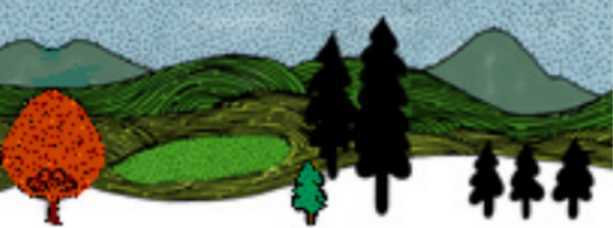

| Class,
Race,
and Gender in the U.S. Economy (Econ250/ES250) Reading
Asssignments
Spring 2005 Updated April 18, 2005 |
|
I.
INTRODUCTION
(Weeks 1 & 2)Readings: *
required, o recommended
1) PURPOSE OF COURSE: HONORABLE DISCUSSION On
Reserve/Handout:
*Rehumanizing Society,
Gonzales & Rodriguez
2) A STATEMENT OF THE PROBLEM
On Reserve:
*
Let
America Be America Again,
Langston Hughes
* The
Stream, Leonel I. Castillo, Studs
Terkel
* We’ve Been Here
Before, George F. Will
* A Different Mirror, Ronald Takaki o From Individual to
Structural Discrimination, Fred L. Pincus
Rothenberg, p 186 - 196:
* The Problem:
Discrimination, The U.S. Commission on Civil Rights
3)
THE SOCIAL CONSTRUCTION OF IDENTITY and DIFFERENCE4) FRAMEWORK: THE ECONOMICS OF STRATIFICATION On Reserve/Handout:
*The Market and Economic
Stratification, P. Martinez
|
II.
CLASS
(Weeks 3 & 4) 1)
EXPERIENCE OF CLASS
On Reserve
o The Men We Carry in
Our
Minds, Sanders
Rothenberg,
* C.P. Ellis,
Studds
Terkel
2)
WHAT IS “CLASS”?
On Reserve:
o Literature, Class, and
Culture: Introduction, Lauter & Fitzgerald
A.
Sociological
Analysis
i.
De-classe American Myth:
"Everyone is middle class."
Rothenberg:
* Class in America: Myths
and Realities (2000), Gregory Mantios
o Media Magic: Making Class
Invisible, Gregory Mantios
ii.
Self-identification: Aspirations,
Consumption Patterns
iii.
Other
Characteristics: Cultural Values,
Education, etc.
B. Economic Analysis i.
Neo-Classical Analysis: Market
Rewards for
Abilities
ii.
Classical Analysis: Labor Theory of
Value (Quesnay, Ricardo,
& Marx)
iii.
A Divided Labor Market
3)
STATISTICAL DISPARITIES: Income, Wealth
and Poverty
A.
Indicators: Education,
Attainment of parents, Race, Immigrant Status, Divorce,
Rothenberg:
*Part IV: The
Economics of Class, Gender, and Race in the US
* 47 Imagine a Country - 2003, Holly Sklar * 48 Number of Peolpe Living in Poverty Increase in the US, Robert Pear * 49 CEOs: New Century, Same Story B.
Poverty in Oregon
Required Web Articles
from OSU
Extension Service:
*A
Portrait of Poverty
in
Oregon, OSU Extension Service
*Minimum
wage
fails to keep up
*Minimum
Wage Graph
*Women
and
children most likely to be poor
C. Income and Wealth Data
Required Web Sites:
ºDivided
Decade,
Collins, Hartman, & Sklar; United for a Fair Economy
http://www.ufenet.org/press/archive/1999/Divided_Decade/DivDec.pdf *Economic Apartheid Data Center, UFE (updated figures for Divided Decade) http://www.faireconomy.org/research/Economic_Apartheid_Data.html#top Federal Reserve: Racial Wealth Gap Has Grown http://www.ufenet.org/research/SCF_Race_2003.html 4) INSTITUTIONS AND CLASSISM: EDUCATION Video, in Class: * The
Secrets of
the SAT, Frontline, PBS video, in class
On Reserve:
* SATs skewed by shoddy
disability, LATimes, Jan. 9, 2000
* Among Affluent Students,
A Culture of Disengagement
Chronicle
of
Higher Education, Nov. 27, 1998
º The Economic Root of
Low Test Scores, LATimes, Mar. 26, 2000
|
III.
Race
(WEEK 5 & 6) 1) EXPERIENCE OF RACISM
Rothenberg:
* Part
III: Discrimination in Everyday Life & Part VI: How It Happened
Students
are
encouraged to read any
and all articles in these sections.
However, for the current topic, only the following articles are required. *22.
The Problem: Discrimination, The US Civil Rights Commission
*23.
Racial Disparities Seen as Pervasive in Juvenile Justice
*24. "White"
Names Give Job Seekers an Edge
*39.
Minority Health Care Found Lacking, Disparity Seen in
Testing, Surgery
*40. Study
Finds the Nation's Public School Districts Are Resegregating by Race
2)
DEFINING RACISM
Rothenberg: *1. Racial Formations, Michael Omi and Howard Winant *3.
Constructing Race, Creating White Privilege
* 20 White Privilege:
Unpacking the Invisible
Knapsack,
McIntosh*4 How Jews Became White Folks *12 Defining Racism: Can We Talk?, Tatum, p.100 3) STATISTICAL DISPARITIES & ECONOMIC EVIDENCE OF RACIAL DISCRIMINATION Rothenberg: *58
Census 2000 Shows America's Diversity
*50
Still at the Periphery: The Economic Status of African-Americans*59 America 2000: A Map of the Mix *51
Being Black, Living in the Red: Wealth Matters
*53
The Wage Gap: Myths and Facts, National
Committee on Pay Equity
a) Income, Wealth, Wage Differentials b) Unemployment Differentials c) Occupational Differentials d) Educational Differentials 4) MODELS OF RACIAL DISCRIMINATION On Reserve:
*Black-White
Income Differences, Michael Reich
*Ch14,
Theories
of Labor Market Discrimination, McConnell, et
al
*Evidence on
Discrimination in Employment, Darity & Mason
*Detecting
Discrimination, Heckman
A) Neo-Classical Supply-Side
Inequality of
Opportunity/Access
Inequality of Education
Demand-Side
Taste,
Market Power,
Statistical, Employee, Consumer
B)
Radical
Social
Movements
Social
Structures
of Accumulation
Rothenberg:
5) INSTITUTIONS & RACISM: EDUCATION & BANKING A) Banking On Reserve:
*
Lending Insights: Hard Proof that Banks Discriminate, Jim Campen
º Study
Discerns
Disadvantage for Blacks in Home Mortgages,
Dedman
B) EducationRothenberg:
º Resegregation
in American Schools, Orfield & Yun
|